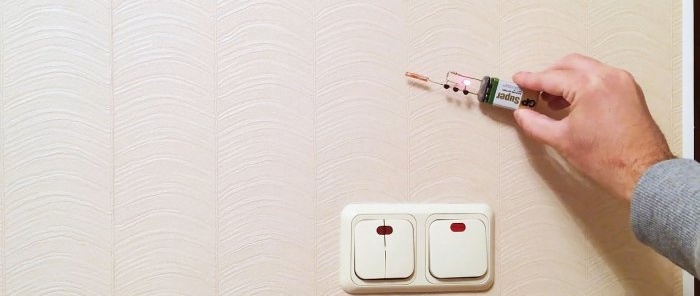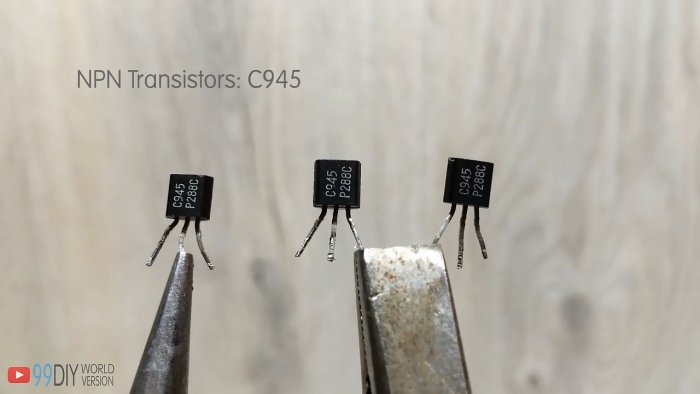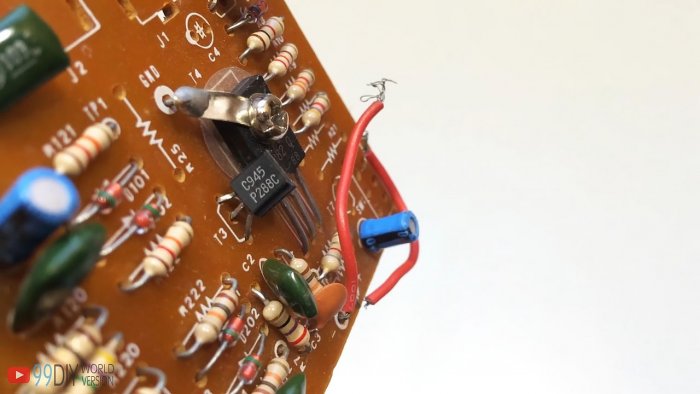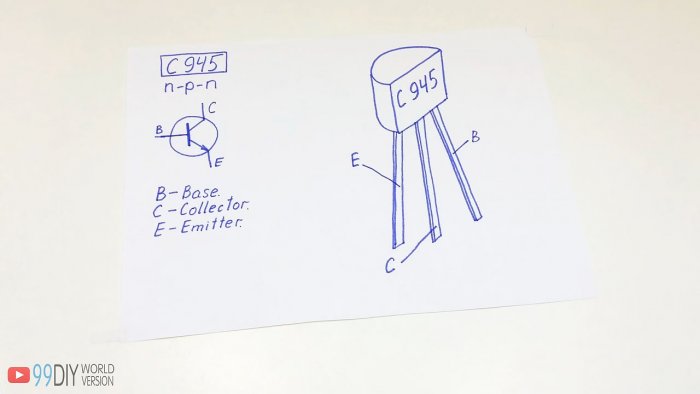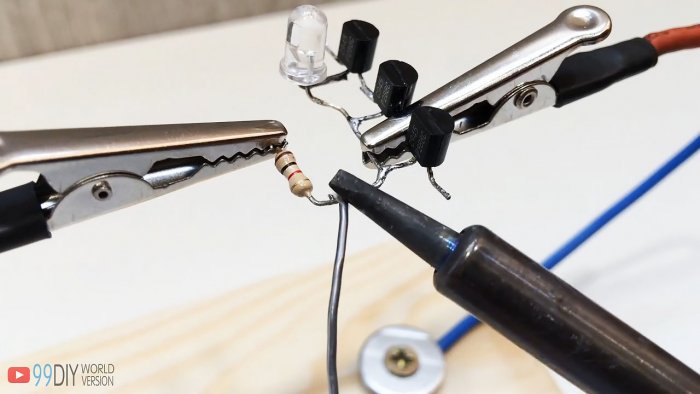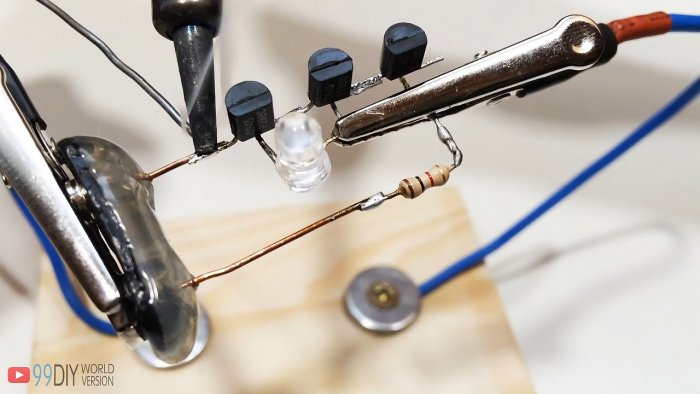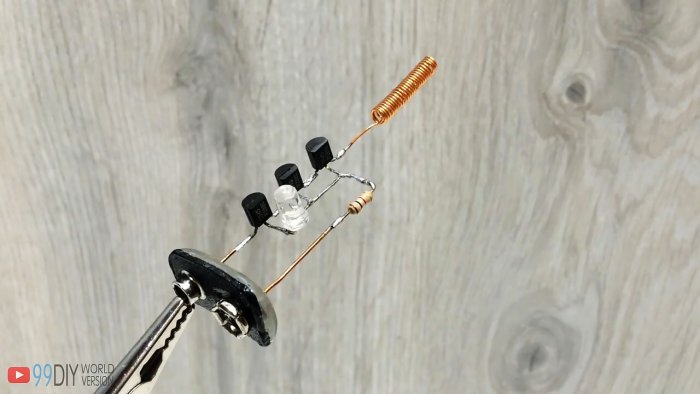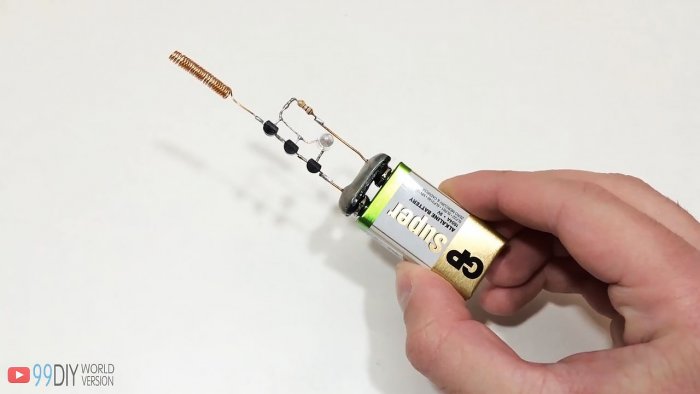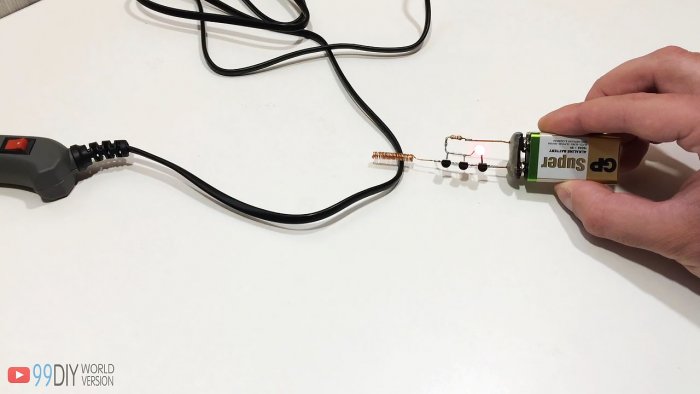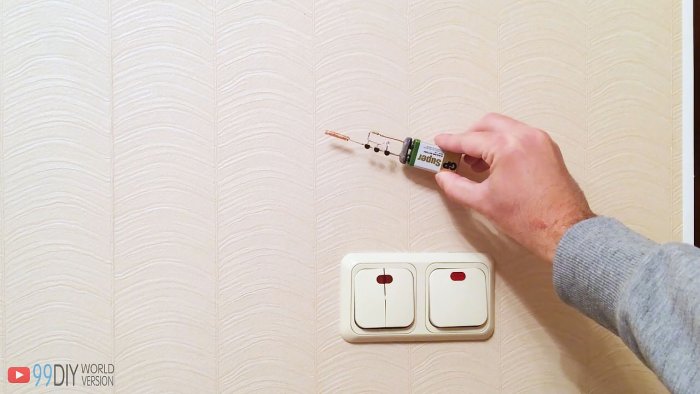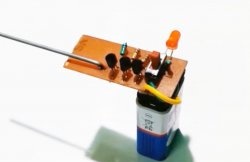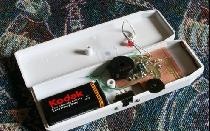There is a strong and urgent need to drill a hole in the wall for a dowel. How can you avoid getting caught in passing wiring? In theory, you need to run to the store and buy an expensive tool to identify hidden wiring. It's good if it's available, but what if it's not? For example, in a provincial village you won’t find it during the day with fire.
Fortunately, such a device is easy to make yourself even if you have the basics of electronics.
Will need
- Transistor n-p-n structure. Almost anyone will do. The example uses C945.
There are a lot of these on old boards. - 1 kOhm resistor.
- Light-emitting diode.
- Connection block.
- Battery 9 V, Krona type.
- Copper wire 0.5-0.8, mm
Simple DIY hidden wiring detector
First of all, let's make a search antenna. Cut a piece of wire approximately 30 cm long.
We wind it on a frame 3-5 mm in diameter. A skewer will do.
Take out the skewer and stretch the coil a little. The result is an antenna.
Hidden wiring detector diagram:
The pinout of the transistor is as follows:
We collect everything according to the diagram. First we solder the transistors to each other.
The good thing about this 5-part design is that it doesn’t require a board—everything is assembled by surface mounting.
Solder Light-emitting diode.
Then the resistor.
We connect the whole thing to the block.
And finally we solder the antenna.
As a result, a ready-made working sample.
To turn it on, you need to put the block on the battery.
We bring it to the wire:
Light-emitting diode lights up.
Real world tests:
When approaching live wiring, Light-emitting diode lights up clearly.
Such a device does not require any configuration and, if the parts are in good condition, starts working immediately.
Now you can easily identify life-threatening places where you should never drill.
